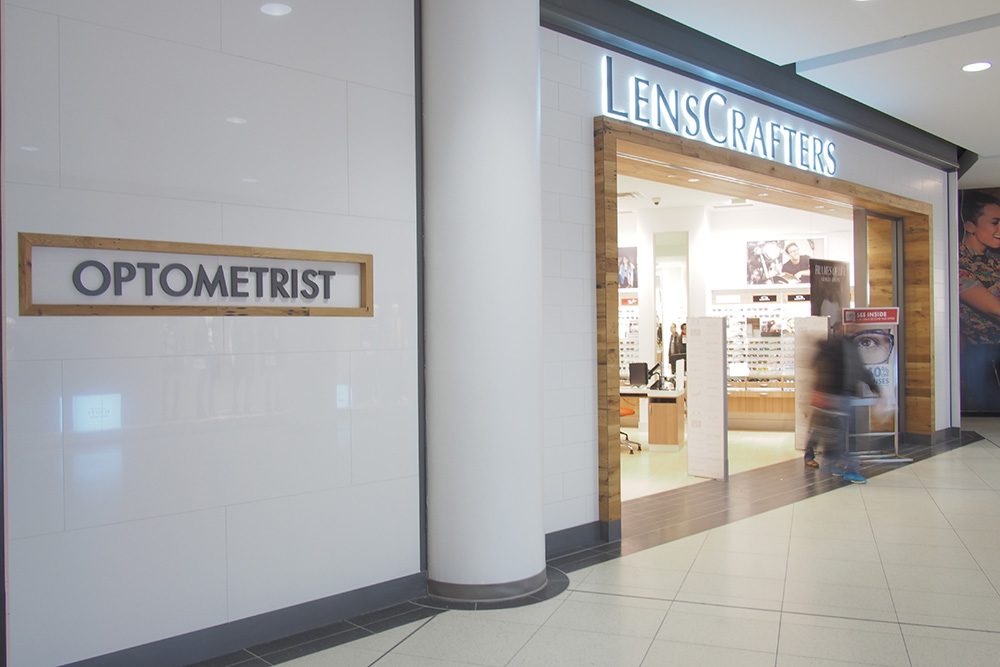Excellence in vision care since 1983

With continuous overnight wear, AOK lenses gradually flatten the cornea to reduce the patient’s myopia (near-sightedness).
Most successful for patients with less than 5 dioptres of myopia and less than 0.75 dioptres of astigmatism. Helps with myopia control in children and adults. A comprehensive eye health exam and AOK consultation must be conducted to determine if the patient is a good candidate. Not a permanent procedure. Myopia will slowly return once contact lens wear ceases. Our optometrists will educate you about the process and ensure that AOK is a good visual solution that meet your needs.
Accelerated Orthokeratology assessments are available at Broadview Eyecare. We use specialty equipment such as a topographer to map your cornea and determine the best AOK hard lenses to improve your vision. Consultations with our Optometrists to discover if you are a good candidate for accelerated orthokeratology is also available at all Dr. Archie Chung & Associates. Learn more about myopia control by visiting AllAboutVision.com.
Speak with our optometrists, to discover if you are a good candidate for AOK.
Do you have myopia (nearsightedness)? In a typical eye, light focuses on the retina for a sharp and clear image. In a myopic eye, the eyeball grows too long. This means light focuses in front of the retina making distance vision blurry. As your child grows, their eyes continue to grow meaning their myopia is likely to worsen. This can have significant impact on their everyday life and possibly lead to future eye health problems.

Myopia usually starts around 8-12 years old and continues to get progressively worse until the child stops growing. The younger a child is when they first become nearsighted, the worse their prescription is likely to become. Most children who become nearsighted at a young age are often totally reliant on glasses to see by the time they have stopped growing.
Being reliant on glasses to see well leads to greater challenges in many aspects of everyday life – especially when growing up. Later in life, nearsightedness can lead to eye heath and vision issues; the more nearsighted you are, the greater these risks become.¹ It’s really important to look at solutions to slow down the speed at which nearsightedness progresses.
More than 50% of the global population will develop myopia by 2050²
Catching and treating myopia early can slow its progression, reducing the severity of myopia and in turn reducing the associated risk of developing these more serious eye conditions.²,³ Our Optometrists understand the importance of keeping myopia under control. There are many current treatment options available:
Slowing myopia progression can significantly reduce the risk of myopia-related complications and vision loss later in life.
Millions of children across Canada are poised to benefit from a breakthrough therapy that addresses the fast-growing issue of myopia (nearsightedness), which is projected to negatively affect more than 50 percent of the world’s population by 2050².
CooperVision MiSight® 1 day contact lenses are now available for fitting by our Eye Care Professionals. It is the world’s first one-day soft contact lens clinically proven to substantially slow the progression of myopia in children. They look and feel like ordinary one day soft contact lenses, but they have a very different optical design called ActivControl™ Technology. Our Optometrists have been trained and educated to offer this unique contact lens solution.
MiSight® 1 day has been shown to reduce myopia progression by more than half versus a single-vision one-day lens1,4. Over three years, children wearing MiSight® 1 day had 59 percent less myopia progression and 52 percent less axial elongation on average than those wearing a single-vision one-day lens1. The innovative contact lens is designed for children who have a myopia prescription from -0.25 to -6.00. Its ActivControl® Technology addresses both axial elongation and refractive error4.
The lens is designed for children’s ease of use and parental peace of mind. In a multi-center study, 100 percent of children who had never worn contact lenses before found MiSight® 1 day easy to remove after one month of wear4. After a single month of wear, 85 percent of children said the lenses were easy to insert4. Children were found to have not changed their daily activities, and their wearing experiences were similar to those of children wearing a single-vision lens1. Children as young as age eight and new to contact lenses reported ease of handling‡. 90% of children said they preferred wearing their MiSight 1 day contact lenses over wearing their spectacles.* ≥ 98% reported seeing well while playing outdoors.* 90% of children reported seeing well while doing schoolwork, reading, watching TV, and playing video games.‡
Children agreed that MiSight 1 day gave them clear vision at a variety of distances during everyday activites. Parents in the same study also had a highly positive response, noting their children could mostly manage their lens wear independently. Prior to dispensing contact lenses, less than half of the parents were extremely at ease with their child wearing contact lenses, but this increased significantly to 79 percent after just one month and remained high through the two-year mark4. After their children had worn MiSight® 1 day contact lenses for three years, 100 percent of parents rated their children “happy” with the overall experience1,5.
*Over a three-year period of studying MiSight® 1 day contact lenses in children 8-15 years; 1 week through 3 year visits. †As reported by parents. After 1 month of wear 100% of the children found the lens easy to remove and 85% of who have never worn contact lenses before find the lenses easy to insert. ‡ From one-week through three-year visits.
Our secure online patient portal grants access to existing patients to view eye health history, directly communicate with your eye care clinic, book appointments online and much more. For convenient service, login today! Contact us directly if online access has not been granted or for any questions and concerns.